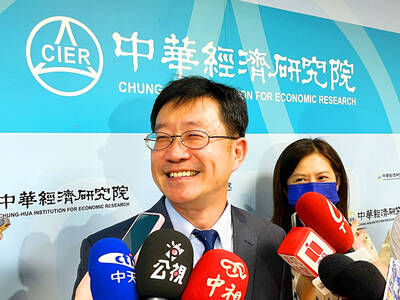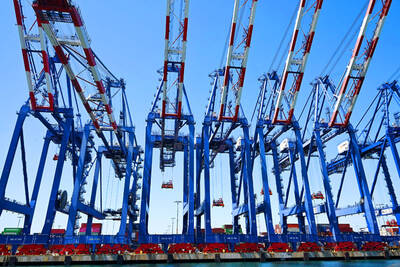The US Federal Reserve’s open-ended third round of quantitative easing (QE3) pulled US stocks out of their slumber and into a two-day rally, taking indices to new multi-year highs when they closed out the week on Friday.
Repeating the surge that followed the late 2010 launch of QE2 — the Fed’s second quantitative easing, bond-buying program — markets seemed poised to continue rallying in the days ahead on the central bank’s promise of an inflation-less, low-interest rate future for possibly another three years.
However, with corporate profits slumping and the economy still facing headwinds from elsewhere — the Fed actually cut its growth forecast for this year — analysts were not confident the rally would trace the long QE-sparked bull run of last year.
The Fed’s announcement of new stimulus on Thursday gave an immediate kick to trade — even if it had been expected — that was sustained through Friday.
The Dow Jones Industrial Average finished the week up 2.14 percent at 13,593.37, its best finish since December 10, 2007.
The S&P 500 gained 1.94 percent to 1,465.77, while the NASDAQ Composite rose 1.52 percent, ending at 3,183.95.
“While everyone is trying to figure out what QE3 means to the economy, stocks have spoken, and they like it,” Ryan Detrick of Schaeffer’s Investment Research said.
“At the same time, hedge funds have totally dropped the ball and missed most of this rally,” Detrick said.
“There’s a good chance these Johnny-come-latelies could be the fuel for the next surge higher,” he added.
Gains were all around, with energy shares and mining companies linked to gold and silver rising strongly.
Freeport McMoran gained 8.1 percent for the period, Barrick Gold added 5.5 percent, and Newmont Mining rose 10.7 percent.
Banks also benefited. Bank of America led the pack with a 8.5 percent gain for the week to US$9.55 while JPMorgan Chase ended up 5.8 percent.
Despite the launch of its iPhone 5, Apple Inc gained an modest 1.6 percent in the week, to a record close of US$691.28.
Other sector beneficiaries were some retail stocks and homebuilders, which regained favor with investors by the Federal Reserve’s promise of lower mortgage rates for homebuyers.
However, there was not as much confidence in the air about the impact of the new monetary stimulus as there was at the launch of QE2 in November 2010.
“The market impact of QE is not very well understood, in part because each QE round has targeted different assets, has differed in size and has been implemented against a different economic and market backdrop,” Chris Low of FTN Financial said.
“And, perhaps most important, investor reactions have evolved as people start to anticipate what happened over the course of each QE round in the past,” Low said.
Analysts said they will still be watching data releases closely for signs of life in the economy.
The week ahead will see the release of the Fed’s New York regional industrial indicator, the Empire Manufacturing Index on Monday; and fresh data on housing starts and home sales on Wednesday.
While strengthening since early this year, economists at Wells Fargo said worries about the political stalemate over fiscal spending are starting to impact the housing sector.
“The housing recovery appears to have lost some steam in recent weeks, as buyers and lenders have grown skittish at the prospect of the approaching fiscal cliff,” they said in a research report on Friday.
“The recovery, particularly as it relates to the labor market, is not going to kick into higher gear unless homebuilding picks up and the Fed is going to do what it can to give starts a little push,” the report said.

IN THE AIR: While most companies said they were committed to North American operations, some added that production and costs would depend on the outcome of a US trade probe Leading local contract electronics makers Wistron Corp (緯創), Quanta Computer Inc (廣達), Inventec Corp (英業達) and Compal Electronics Inc (仁寶) are to maintain their North American expansion plans, despite Washington’s 20 percent tariff on Taiwanese goods. Wistron said it has long maintained a presence in the US, while distributing production across Taiwan, North America, Southeast Asia and Europe. The company is in talks with customers to align capacity with their site preferences, a company official told the Taipei Times by telephone on Friday. The company is still in talks with clients over who would bear the tariff costs, with the outcome pending further

WEAKER ACTIVITY: The sharpest deterioration was seen in the electronics and optical components sector, with the production index falling 13.2 points to 44.5 Taiwan’s manufacturing sector last month contracted for a second consecutive month, with the purchasing managers’ index (PMI) slipping to 48, reflecting ongoing caution over trade uncertainties, the Chung-Hua Institution for Economic Research (CIER, 中華經濟研究院) said yesterday. The decline reflects growing caution among companies amid uncertainty surrounding US tariffs, semiconductor duties and automotive import levies, and it is also likely linked to fading front-loading activity, CIER president Lien Hsien-ming (連賢明) said. “Some clients have started shifting orders to Southeast Asian countries where tariff regimes are already clear,” Lien told a news conference. Firms across the supply chain are also lowering stock levels to mitigate

NEGOTIATIONS: Semiconductors play an outsized role in Taiwan’s industrial and economic development and are a major driver of the Taiwan-US trade imbalance With US President Donald Trump threatening to impose tariffs on semiconductors, Taiwan is expected to face a significant challenge, as information and communications technology (ICT) products account for more than 70 percent of its exports to the US, Chung-Hua Institution for Economic Research (CIER, 中華經濟研究院) president Lien Hsien-ming (連賢明) said on Friday. Compared with other countries, semiconductors play a disproportionately large role in Taiwan’s industrial and economic development, Lien said. As the sixth-largest contributor to the US trade deficit, Taiwan recorded a US$73.9 billion trade surplus with the US last year — up from US$47.8 billion in 2023 — driven by strong

RESHAPING COMMERCE: Major industrialized economies accepted 15 percent duties on their products, while charges on items from Mexico, Canada and China are even bigger US President Donald Trump has unveiled a slew of new tariffs that boosted the average US rate on goods from across the world, forging ahead with his turbulent effort to reshape international commerce. The baseline rates for many trading partners remain unchanged at 10 percent from the duties Trump imposed in April, easing the worst fears of investors after the president had previously said they could double. Yet his move to raise tariffs on some Canadian goods to 35 percent threatens to inject fresh tensions into an already strained relationship, while nations such as Switzerland and New Zealand also saw increased